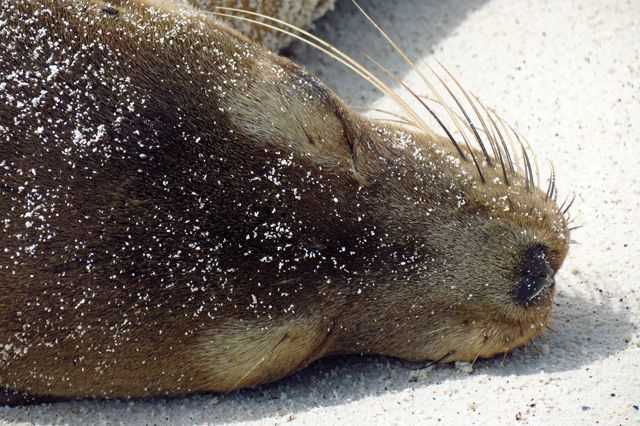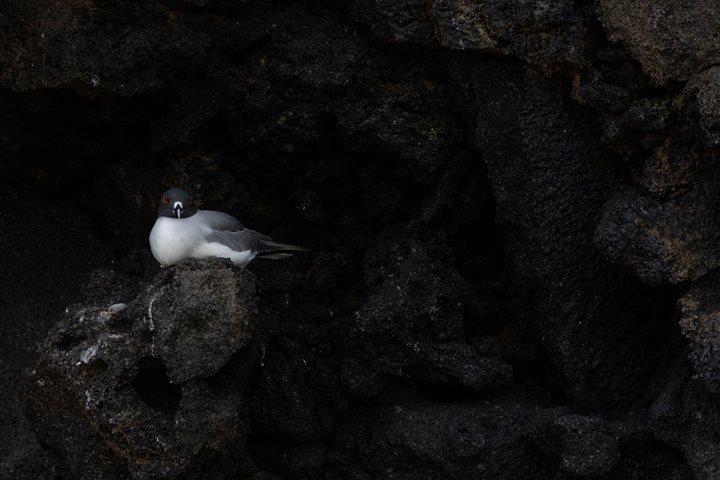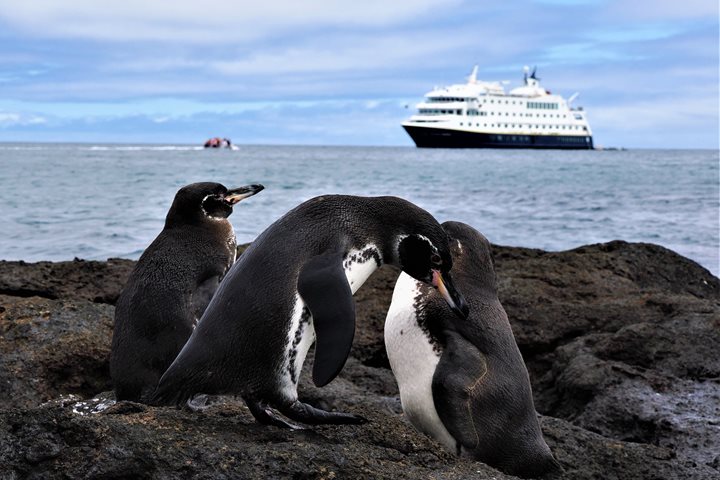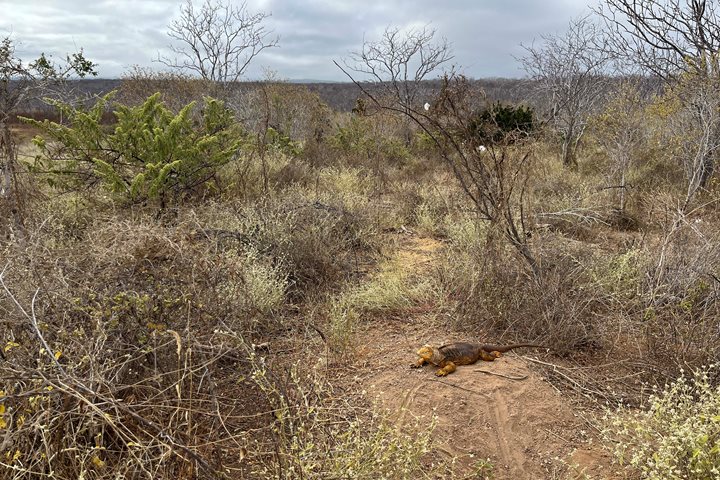Early in the morning, we woke up already anchored at Gardner Bay, in the northeastern corner of Española Island. This is one of the oldest in the archipelago; rather low in elevation, it is obvious that fresh water is scarce here. Despite the cloudy start of the day, we could see that we were to land on one of the most beautiful beaches of the archipelago: Gardner Beach. Not far from it, a few islets offer the perfect conditions for snorkeling. This time of the year, juvenile Galapagos sea lions are always inquisitive and willing to follow any snorkeler that shows up in their domains. Once we set foot at the beach, it was simply marvelous to be able to share this stunning place with its rightful owners, the Galapagos sea lions. There is a healthy colony here, and one can never get bored of walking along the beach and observing these unique species that, like all other species in the archipelago, don’t show fear of humans. They just continue with their everyday life, and we have to keep remembering that these are indeed wild creatures living in their natural environment.
During lunch time, we dropped anchor at Punta Suarez, in the western tip of Española. This “punta” or point is one of the highlights of the week due to the number of endemic species that inhabit it. As it is located in an area with high productivity, it supports a variety of marine and land creatures. Certainly one of the most striking ones is the marine iguana, a true sea-going lizard that has the ability to dive for its favorite food: seaweed. They were certainly numerous in various patches along the coastal trail... it was an awesome sight. The place is just spectacular: brightly colored Sally Lightfoot crabs adorned the black, basaltic shoreline, and there was a small colony of Galapagos sea lions, whose interactions are always fun to observe. Further inland, we found various land birds like the endemic Galapagos dove and the inquisitive Española mockingbird as well as some Darwin finches. However, Española is the only home to one of the iconic species of the islands: the Galapagos albatross. Known also as the waved albatross, it is the only one in tropical waters that sometimes wanders into the northern hemisphere. They were quite busy this afternoon: incubating eggs, courting or gliding past our heads... what a fantastic experience! As we returned to our landing, we crossed another seabird colony. The day was ending and many parent Nazca boobies were returning to their young. They were wildly excited, as they were certain they would get a hearty meal regurgitated by their loyal parents.
The common feeling was like being in a live documentary... it was the magic of the Galapagos at its best!







